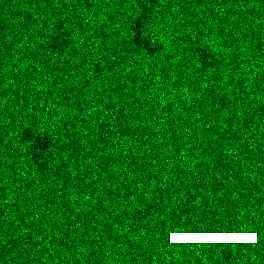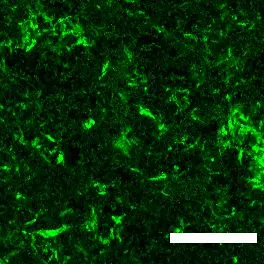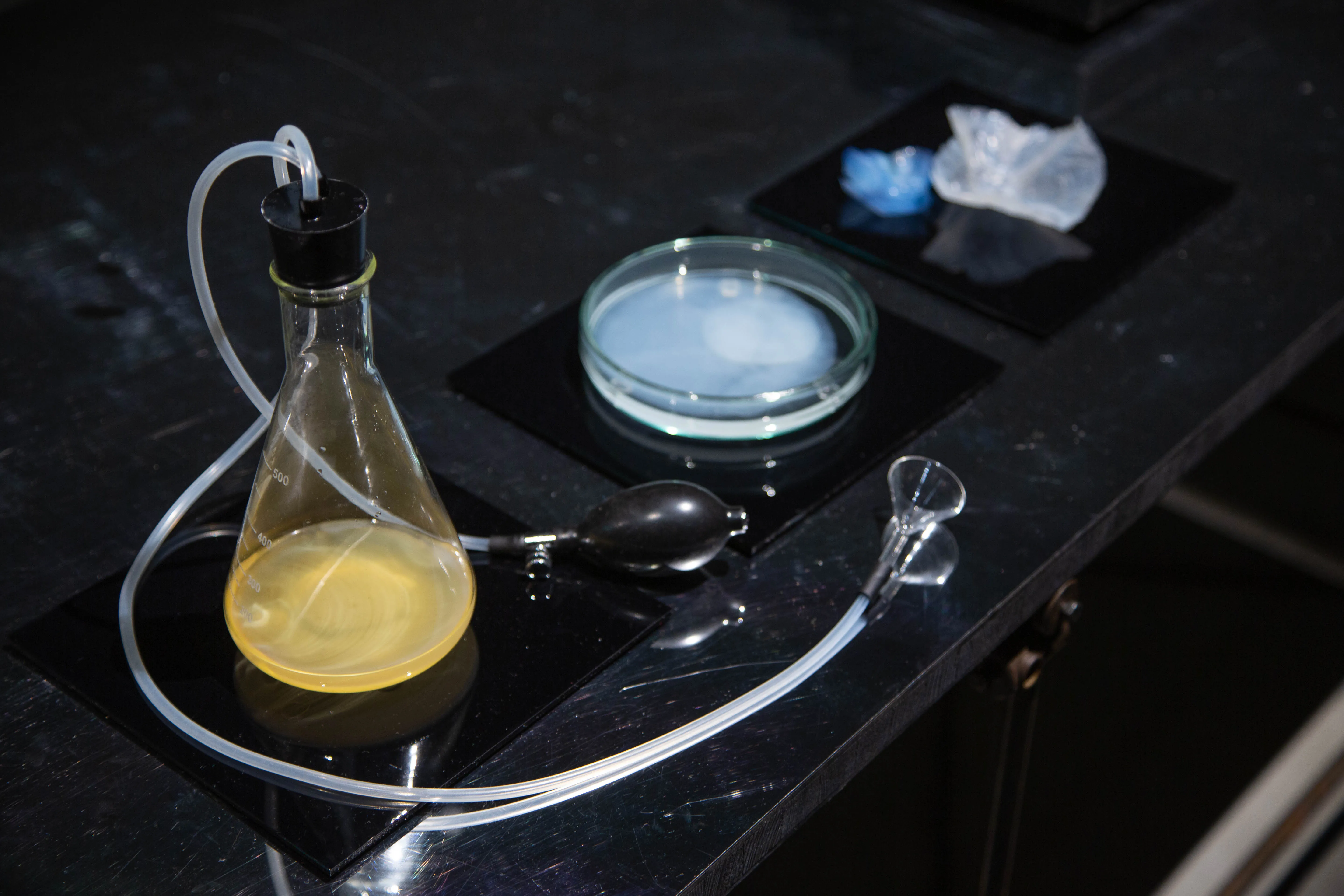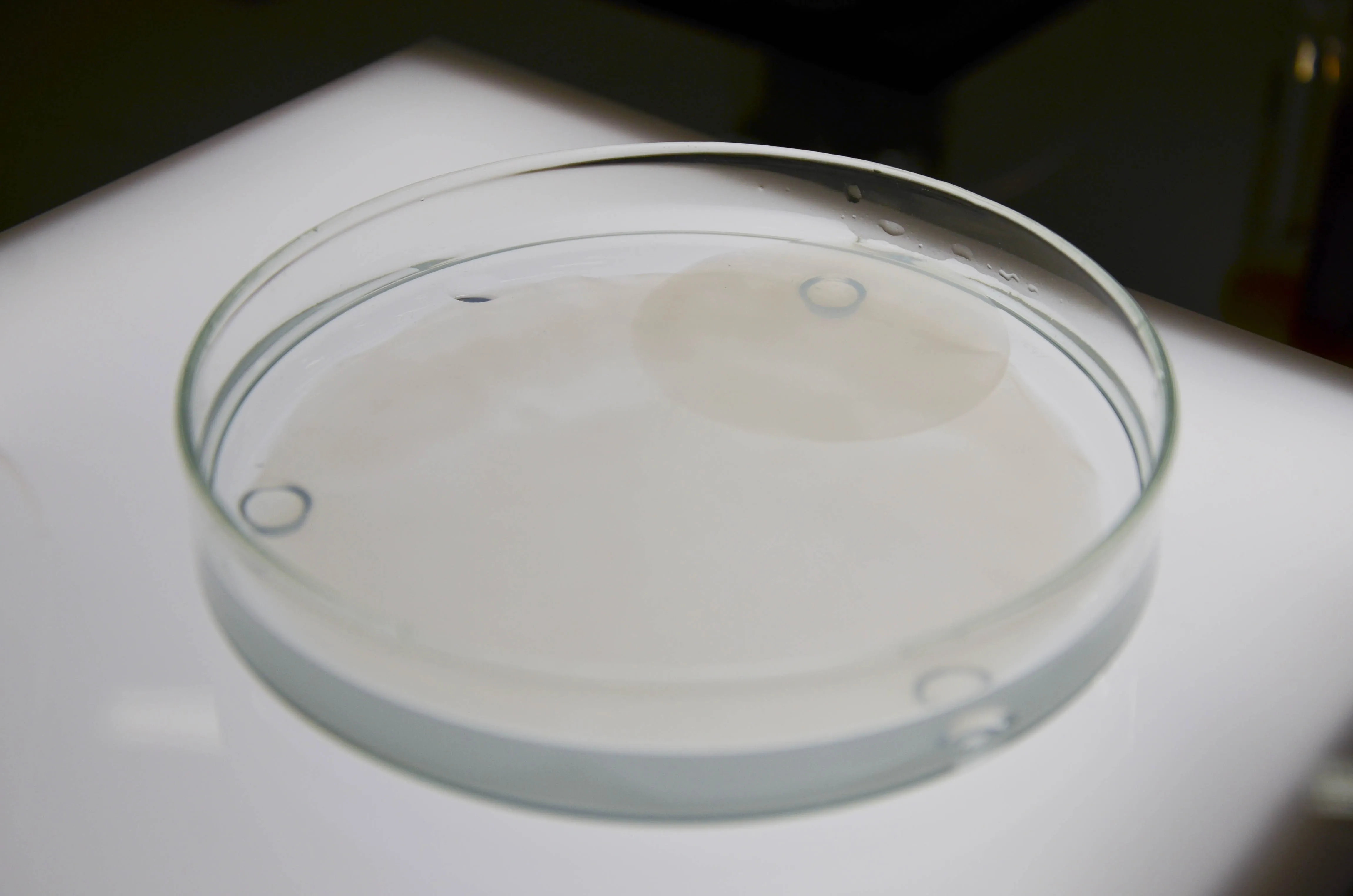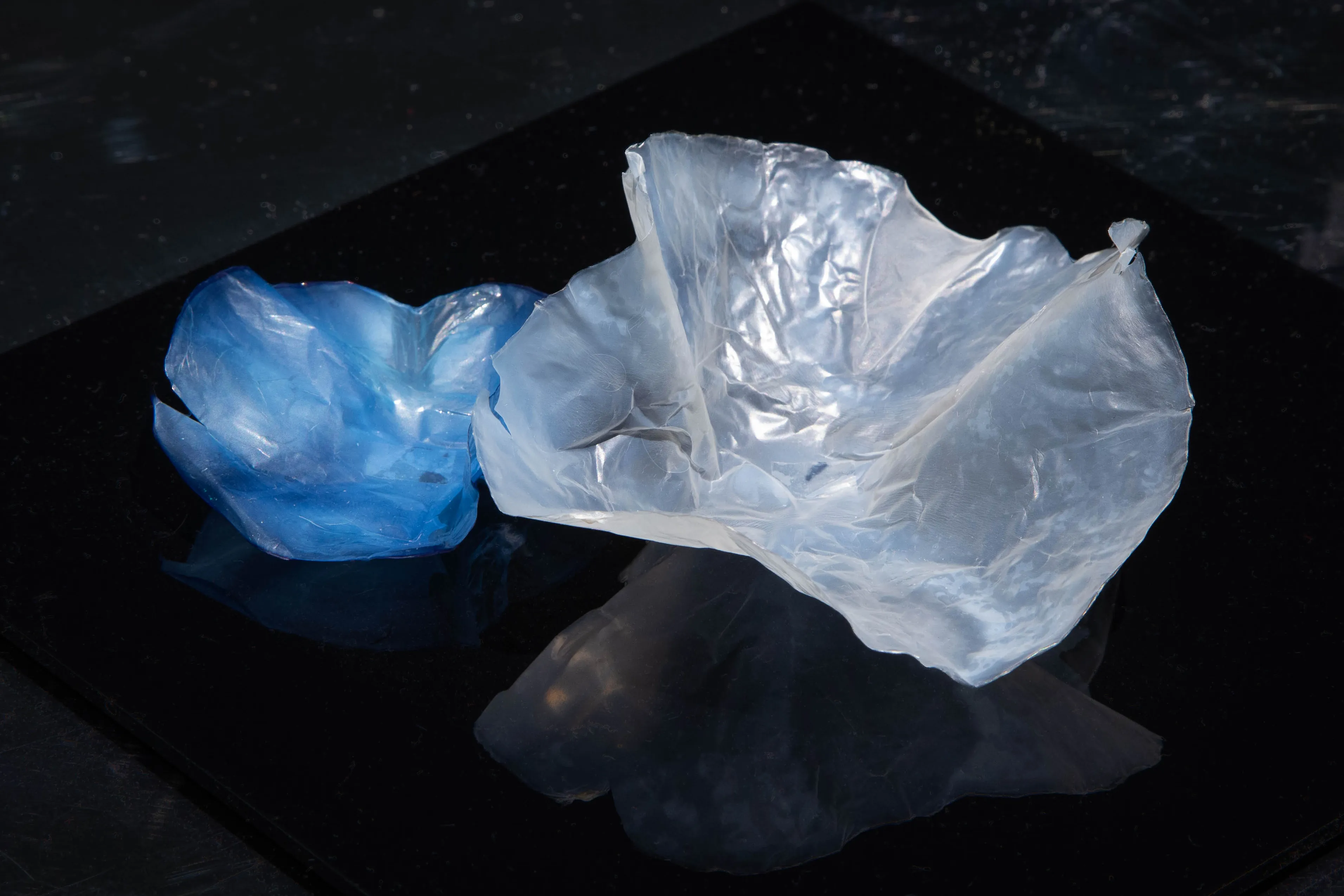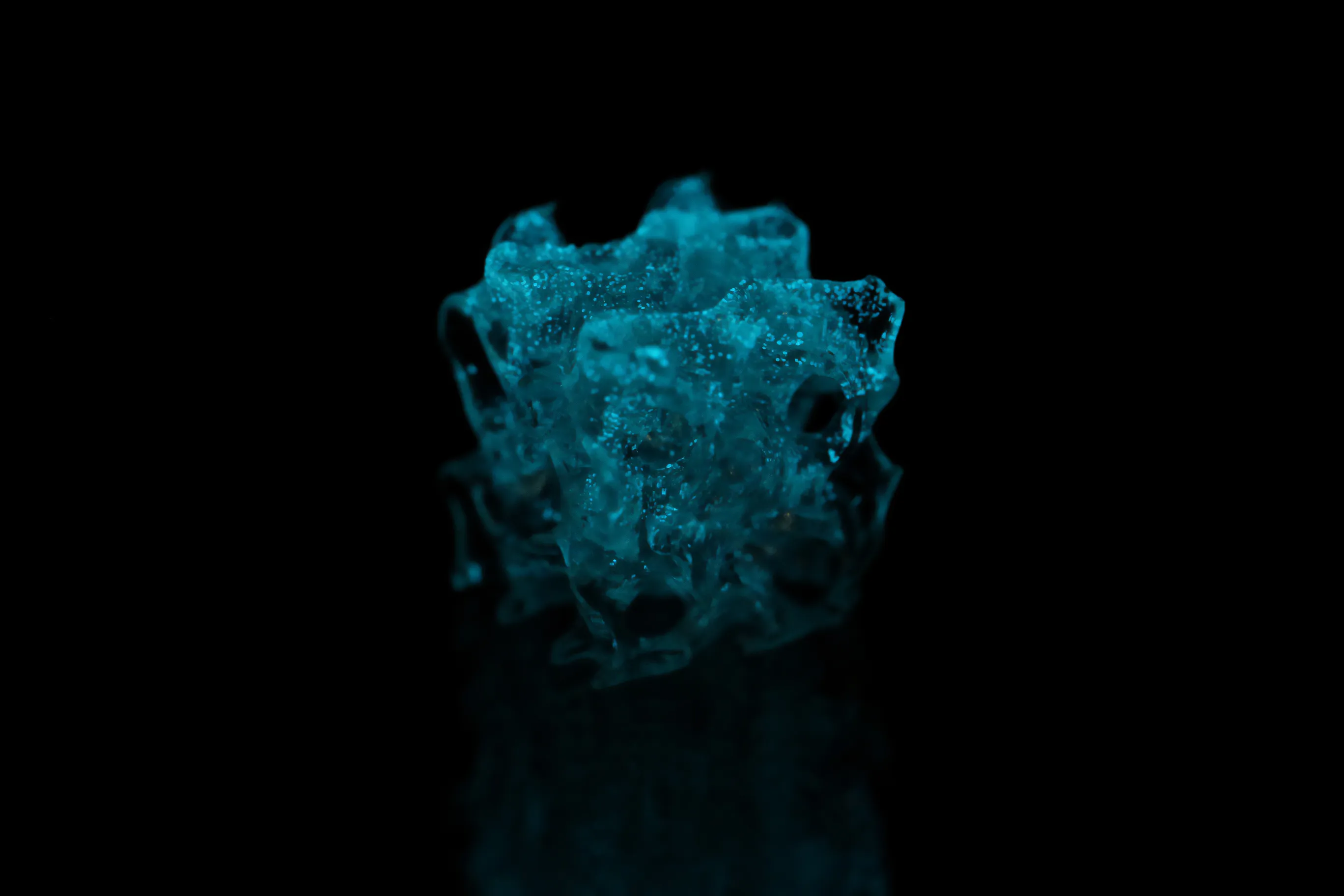Bacterial Hydrogels
Active adaptive gels with living organisms.
We're finally uncovering the marvel of living materials: human-made substances that mimic living organisms. Here, a soft hydrogel out of living bacteria is designed to sense its environment and influence the material’s properties. Have you ever made Kombucha? It’s a very similar process. It's a versatile living material useful for various purposes, and it completely breaks down once it's no longer needed.
Researcher
Institutions
Tags
Properties
What sets it apart?
Grows under mild conditions
Living organisms, such as bacteria, possess the remarkable ability to develop into a wide variety of complex shapes, structuring themselves as they grow. Unlike numerous contemporary materials that need high temperatures and harsh chemicals during production, living systems thrive and evolve under mild conditions.
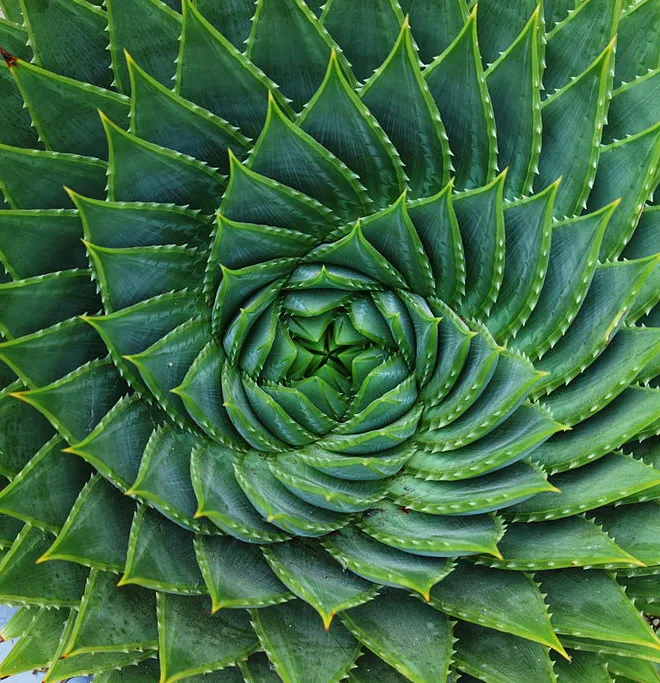
© By Samuel Wantman/Wikimedia Commons. CC BY SA 3.0
The intricate shapes of aloe polyphylla (spiral aloe).
Adaptive structure
Nature creates various well-structured materials, like silk, wood, and bone, with unique properties we would love to see in the materials we use in everyday life. These natural materials form and optimize themselves in complex environments, exposed to the elements, without relying on human energy input.
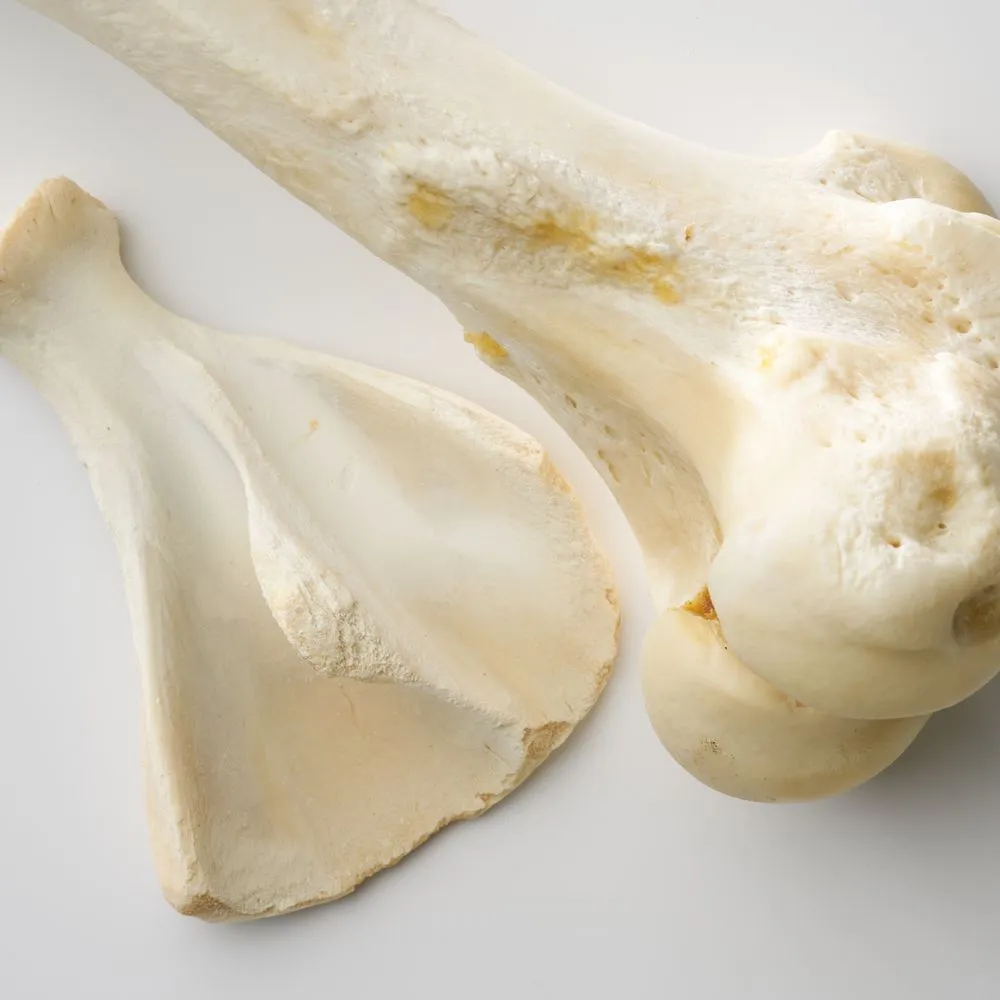
© Material-Archiv
Bones – light, strong and exceptionally resilient.
Alive
The gel's power lies in its bacteria. These bacteria live inside the gel and have special genetic circuits that sense the environment and produce proteins to even change their surroundings. Therefore, this material is alive! This allows it to sense its environment and grow and adapt. These unique traits provide it with remarkable abilities and the potential for incredibly complex systems that can be encoded into the bacterium's genetics.
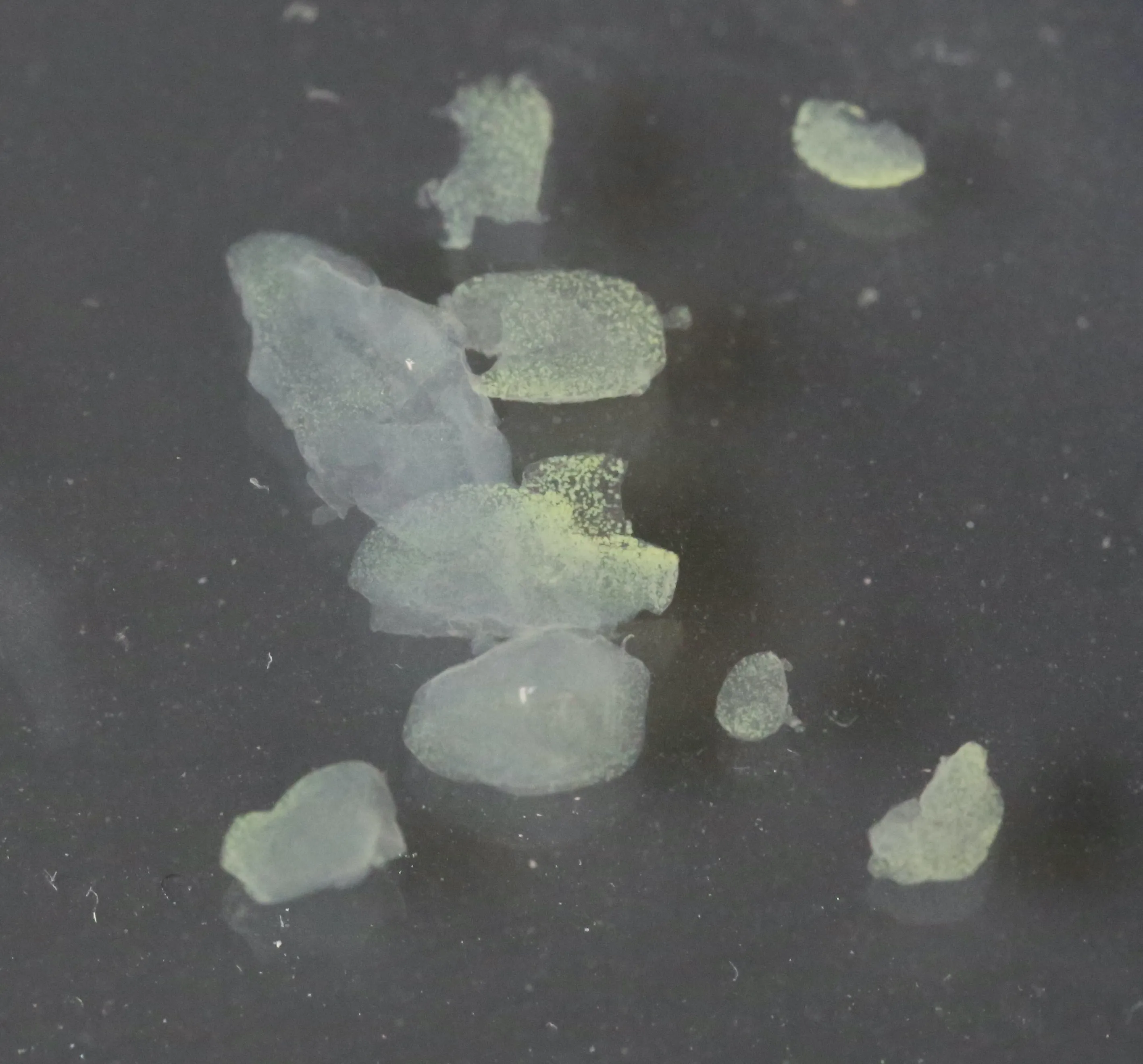
In this picture, the genetically modified cells produce a Green Fluorescent Protein derived from a jellyfish, allowing us to see them easily with fluorescence microscopy.
The gel is made of alginate – a polymer from brown seaweed – and E. coli bacteria – a group of bacteria that is popular because they’re easy to isolate and well-known. In nature, they're often present in the lower intestines of warm-blooded creatures.
Sensing the environment
Bacteria can sense temperature, light, or chemical influences. In response to the external stimuli, the bacteria change the hydrogel’s state – from soft to stiff or small to big. The bacteria achieve this by producing enzymes or polymers that degrade or strengthen the structure of the hydrogel. This material can even transform from a liquid to a more gelled state caused by the reaction of the bacteria. Magnificent!
This research is inspired by living organisms, which have almost miraculous capabilities compared to the usual materials we use. Natural systems define sustainability, particularly since the biosphere has been growing and propagating itself for billions of years. By trying to emulate natural development in manufacturing, we can create complex materials in a more sustainable way.
Applications
Bandaids of the future, but what comes next?
Bacterial Hydrogels have diverse purposes, particularly in biomedicine. They're already used to improve gut health and accelerate healing in infected wounds by incorporating bacteria. The overarching goal of the research is to program specific traits and shapes. However, there's still a lot to learn about how to design and apply these living materials. Numerous potential uses have yet to be explored. Where would you start?
© Morphogenèse programmable simulée à l'aide du progiciel GFtbox dans MATLAB. Kennaway, R., Coen, E., Green, A. & Bangham, A. PLOS Computational Biology 7, e1002071 (2011).
Engineered bacteria could be used to create a hydrogel with very specific material properties so it can morph into desired shapes and structures, inspired by a natural process called morphogenesis. morphogenesis is the process through which an organism forms its distinctive shape. The most exciting thing about this is that it’s all possible in mild conditions. What applications can you think of, for instance, in architecture or product design?
Composition
The Bacterial Hydrogel consists of hydrogel – a gel formed from a polymer that doesn't dissolve in water but can bind it – and colonies of bacteria living inside it. The bacteria are embedded in the squishy body of the hydrogel, which contains food for them to grow.

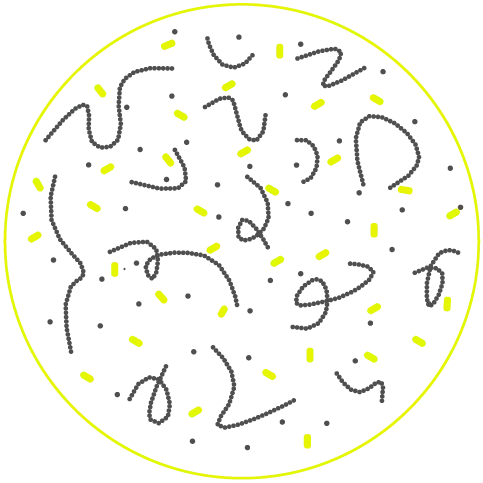
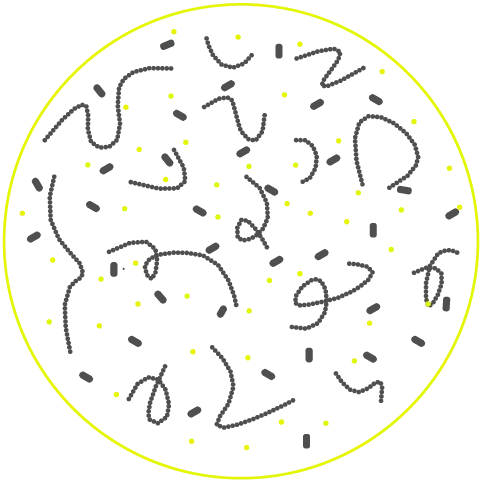
The hydrogel is made of long polymeric molecules, which form an intertwined network suspended in water, creating a solid gel. Several materials can be used for the hydrogel, such as alginate, hyaluronic acid, and gelatin.
To fabricate the material, the hydrogel is combined with engineered bacteria like modified E.coli. When the conditions are right, bacteria will develop from simple colonies to more and more complex structures that behave like sophisticated, self-regulating organisms, like our bodily tissues and organs.
Within the water, there are dissolved salts and nutrients for the bacteria. These allow them to flourish and multiply at room temperature. Essentially, the bacteria serve as both the architects and constructors, doing all the heavy lifting. Our role primarily involves providing them with the right work environment and the occasional nudge in the right direction.
Fabrication
Bacterial hydrogels grow at room temperature and normal pressure. After combining the ingredients, the bacteria grow over the course of several days and stay alive as long as they have enough to eat.
Bacterial Cellulose
This example of a bacterial hydrogel uses cellulose-producing bacteria. Bacteria grow well at room temperature and normal pressure. Over ten days, the bacteria create a layer of bacterial cellulose at the surface of the liquid. Remember the kombucha? It’s the same process!
Timelapse of growing bacterial cellulose over multiple days.
Alive, washed and dried
As long as the bacteria are alive, the material keeps its ability to transform itself based on the environment. If the bacteria die, they leave back the hydrogel as a material. It is possible to dry it, leaving the polymer behind.
Feedback
Anton wonders what you think about this research. Let him know!

Researcher of Bacterial Hydrogel
